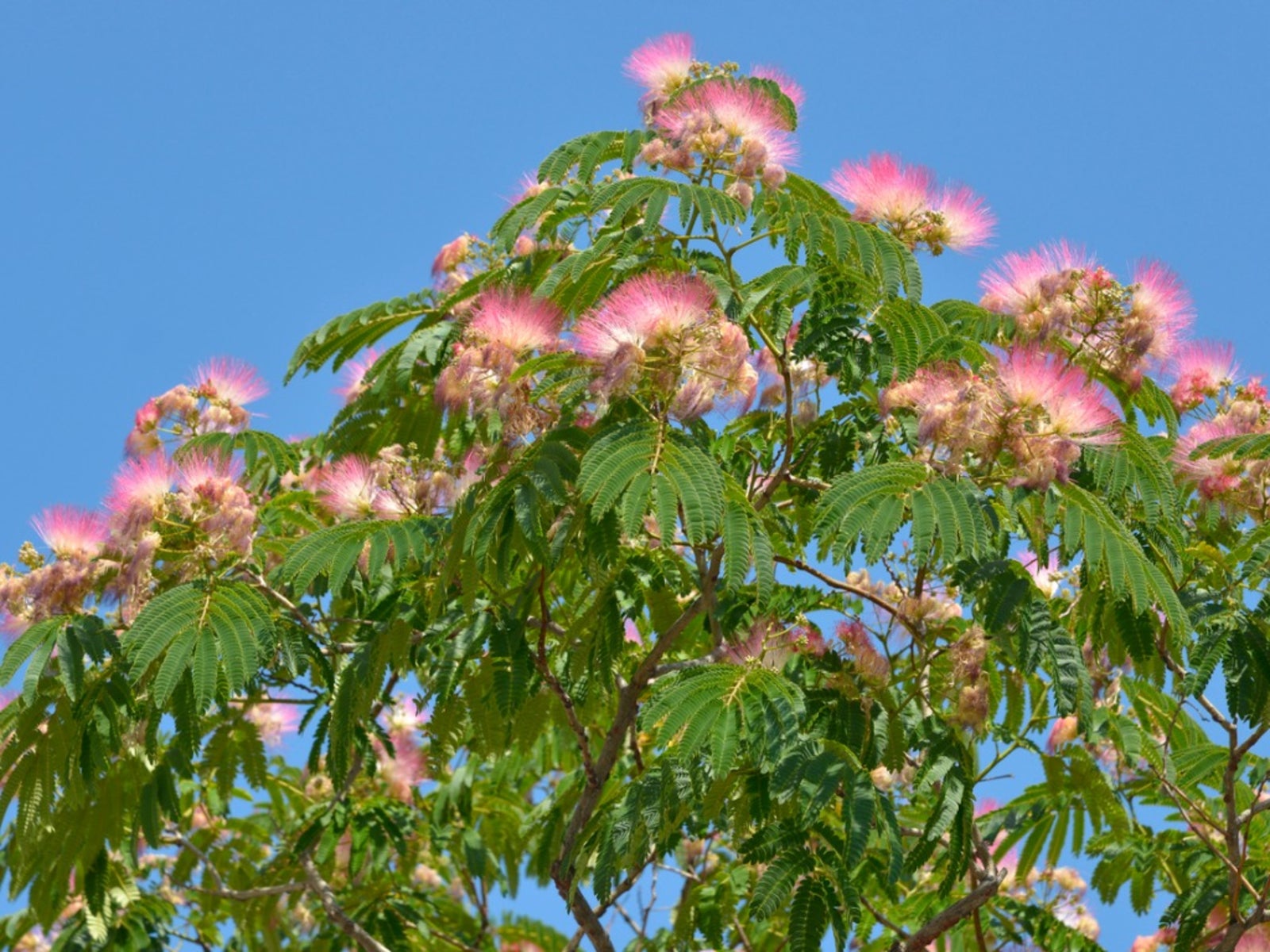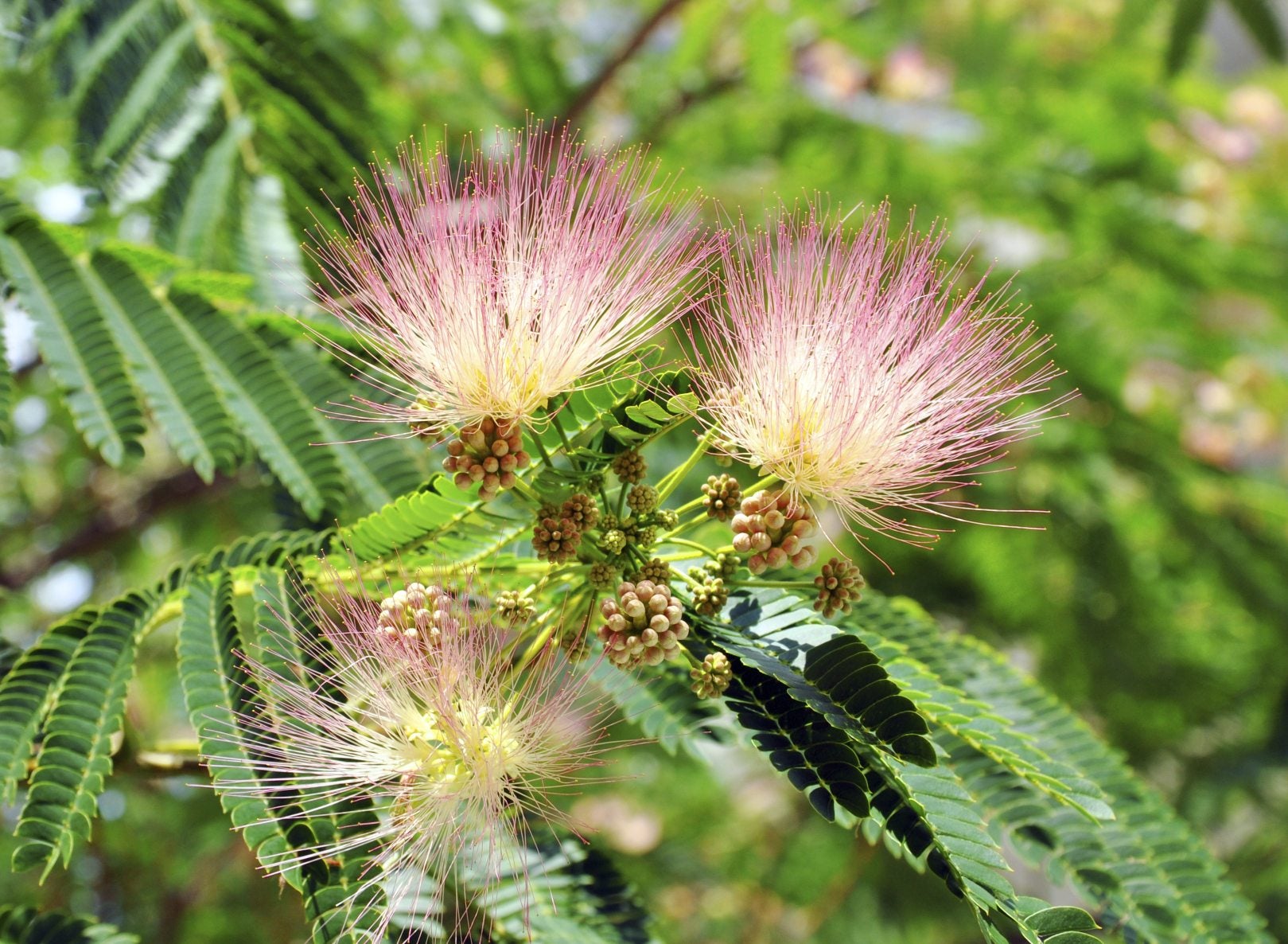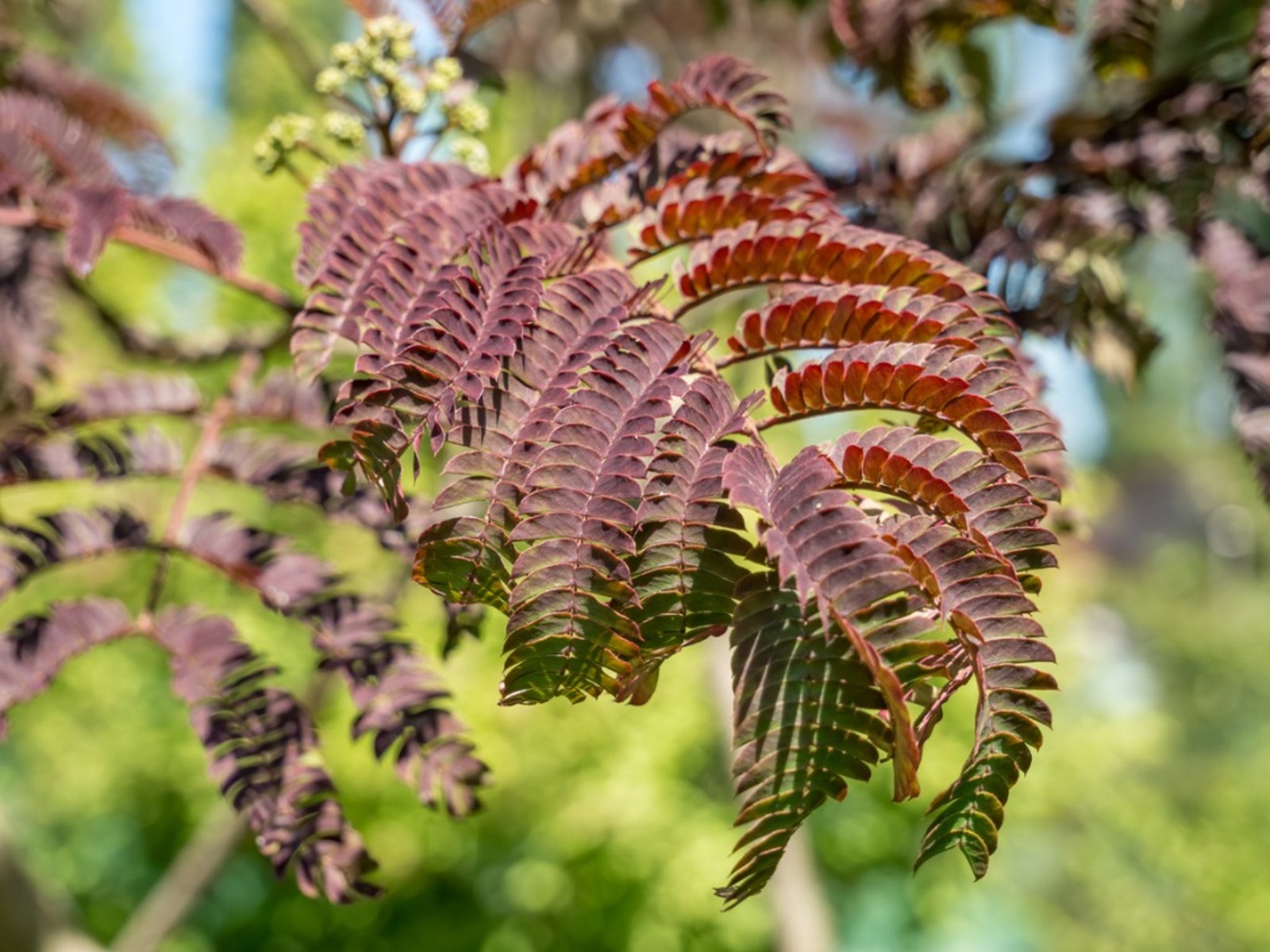Moving Mimosa Trees: How To Transplant Mimosa Trees In The Landscape


Sometimes a certain plant just doesn't grow right where it’s located and needs to be moved. Other times, a plant may quickly outgrow a landscape. Either way, moving a plant from one site to another can cause stress, or even death, if not done properly. Fast growing mimosa trees can quickly outgrow an area. While the average 25-foot (7.5 m.) height of one mimosa tree doesn't sound that hard to fit into the landscape, mimosa trees seed profusely, and one mimosa tree can quickly turn into a stand of mimosa trees. Continue reading to learn about properly moving mimosa trees and when to transplant a mimosa tree.
Mimosa Tree Transplanting
Many times, mimosa trees are planted as specimen plants in landscape beds near a home or patio. Their sweet-smelling flowers bloom in midsummer and then form into long seed pods that disperse seeds everywhere. As we get busy with other things in the garden in late summer and fall, it's easy to overlook the seeding habits of mimosa until the following year when seedlings pop up all over. With its adaptation to almost any soil type, tolerance of full sun to part shade, and quick growth rate, your one specimen mimosa can quickly turn into a thicket of mimosa. While this may be fine for a windbreak or privacy screen, a dense stand of mimosa can take over a small landscape bed. In time, you may find yourself needing to move mimosa trees to a location where they can be allowed to grow and seed densely.
When to Transplant a Mimosa Tree
Timing is important when transplanting a mimosa tree. Like any tree, mimosa trees are easier to transplant the younger they are. A small sapling will have a much greater survival rate if moved than an older, more established tree. Sometimes, it is necessary to move a bigger tree, though. Either way, safely transplanting a mimosa tree will take a little prep work. Established trees should be transplanted in late fall to early winter after all the leaves have fallen off and gone dormant. Small saplings can be dug up in spring and potted to give away to friends or family, or until a proper site is selected.
How to Transplant Mimosa Trees
First, select the new site for the mimosa. This area should have well-draining soil and be full sun to part shade. Pre-dig the hole in which the mimosa will be going. The hole should be twice as wide as the root ball you will be placing in it, but no deeper than the tree is presently growing. Planting any tree too deeply can cause root girdling and improper root development. Oftentimes, arborists will recommend digging a hole slightly deeper than the plant's root ball, but then creating a small mound of soil in the center for the root ball to sit upon so that the tree itself is not planted any deeper than it should be, but the horizontal roots are encouraged to spread out and down into the deeper area of the hole. Once your site and planting hole are prepared, place a wheelbarrow filled halfway with water and a transplanting fertilizer, like Root & Grow, next to the mimosa tree you are digging up. Depending on the size of the tree you are moving, with a clean, sharp spade, start digging about a foot to two (0.5 m.) out from the base of the tree. An older, larger tree will have a larger root system and will need more of these roots intact to survive the move. A clean, sharp spade will help easily cut through these roots while not damaging them too badly and reduce transplant shock. Established mimosa trees can have long, thick taproots, so it may be necessary to dig down around the tree up to 2 feet (0.5 m.) to get a good portion of this taproot. After digging up the mimosa tree, place it in the so you can easily move the tree to its new location in the landscape. Place the mimosa tree in the prepared, new hole. Be sure that it will not be planted any deeper than it previously was going. Add soil under the root ball, if necessary, to raise it. Fill the area around the roots with soil, gently tamping it down to prevent air pockets. Once the hole is refilled with soil, dump any leftover water and rooting hormone in the wheelbarrow onto the root zone. It will be necessary to water your newly transplanted mimosa tree daily for the first week. Do not use any fertilizer until spring. After the first week, you can water the tree twice a week for the next two weeks. Then drop down to a good, deep watering once per week. When watering any newly planted tree, you should give it about a twenty minute, slow trickle of water for deep watering. Once a mimosa tree is established, they can tolerate drought and will require very little watering.
Gardening tips, videos, info and more delivered right to your inbox!
Sign up for the Gardening Know How newsletter today and receive a free copy of our e-book "How to Grow Delicious Tomatoes".
-
 Never Plant Seedlings Until They Pass These 3 Simple Tests
Never Plant Seedlings Until They Pass These 3 Simple TestsDon't be over-eager to transplant seedlings into the garden before they are ready. These quick and easy checks will help ensure flourishing plants.
By Mary Ellen Ellis
-
 Grow ‘Karl Rosenfield’ Peony Plants For The Ultimate Frilly Border Beauties And Cut Flowers
Grow ‘Karl Rosenfield’ Peony Plants For The Ultimate Frilly Border Beauties And Cut FlowersFor frilly double magenta peony petals infused with a heady fragrance, grow ‘Karl Rosenfield’ peony plants. Here’s how to cultivate the ultimate plushy blooms
By Tonya Barnett
-
 Mimosa Tree Facts: Learn How To Get Rid Of Mimosa Tree Weeds
Mimosa Tree Facts: Learn How To Get Rid Of Mimosa Tree WeedsDon't let the fluffy flowers and lacy foliage fool you. Mimosa trees may not be the perfect ornamental for your garden. These trees are invasive. For information on mimosa tree management and control of mimosa trees, this article will help.
By Teo Spengler
-
 Chocolate Mimosa Tree Care: Tips On Growing Chocolate Mimosa Trees
Chocolate Mimosa Tree Care: Tips On Growing Chocolate Mimosa TreesIf your garden could use a touch of the tropics or a little Asian flair, consider growing chocolate mimosa. Find out more about this interesting tree in the following article. Click here for additional info.
By Jackie Carroll
-
 Silk Tree Mimosa Growing: Learn About Silk Tree Care
Silk Tree Mimosa Growing: Learn About Silk Tree CareSilk tree mimosa growing can be a rewarding treat once the silky blooms and fringe-like foliage grace the landscape. So what is a silk tree? Read this article to learn more. Click here to for more info.
By Susan Patterson